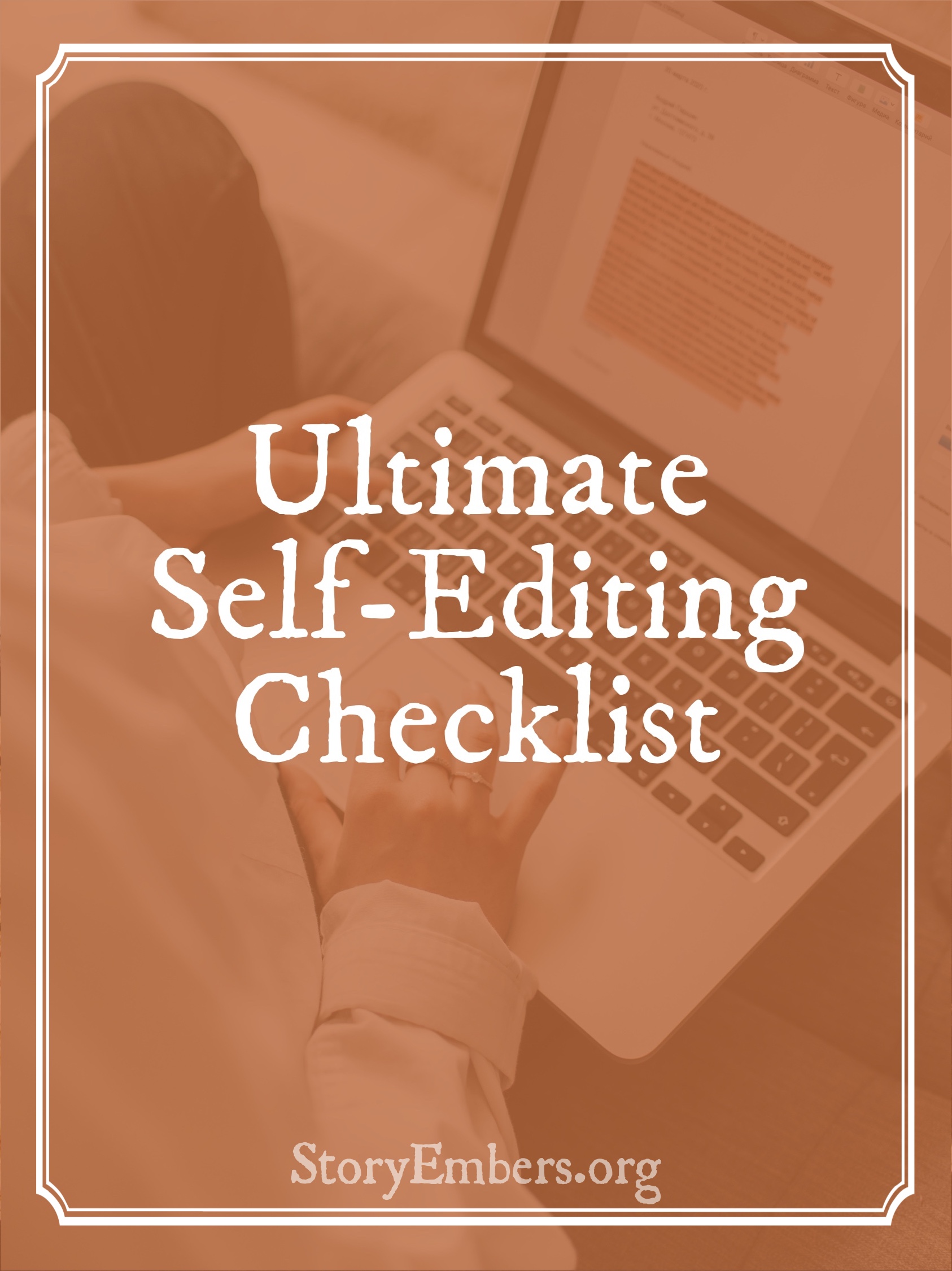You’ve finished the first draft of your novel. What’s next? At some point you’ll need to show your manuscript to a beta reader or two. Seeking an outside opinion is an invaluable and inescapable step in your writing process. Before you send your novel off for critical eyes and minds to parse through, though, I’d recommend passing over it with a red pen.
By putting your best foot forward, you’ll feel more confident. But you’ll also be correcting some of your story’s superficial problems before someone else critiques it, which means your beta readers will concentrate on the deeper issues. What you gain from a critique depends upon what you invest.
That said, you don’t want to spend the rest of your life chiseling your manuscript into its absolute best shape before sharing it. So, here are five flaws you can quickly fix before your book hits the critique circuit. (Also, keep an eye out for typos as you go.)
1. Too Many One-Sentence Paragraphs
Problem: First drafts often look like this:
Character does an action. Then something unexpected happens.
Something unexpected.
What does it mean?
What can it mean?
Isolating a major plot point or character thought is a legitimate way to add emphasis, and it brings a novel’s pacing to life. The trouble is that many authors (like me) overuse this technique in their first drafts, which dulls its effect until it becomes annoying.
Solution: When you see a solitary sentence, try the following three experiments to determine if the separation is necessary:
- Connect the sentence to the end of the previous paragraph and reread it. Does it work as one paragraph?
- Read the page aloud. Do you naturally add a pause for the isolated sentence? Does it sound right?
- Name the emotion you hope to create. If you can’t pinpoint it, the sentence probably doesn’t deserve its own line.
2. Sentences that Are the Same Length
Problem: This is pretty self-explanatory. If all your sentences are identical in length, they become tedious and even difficult to read.
Solution: Add variety. When I was still a happy little homeschooled pup, I took a writing course that I did not like (IEW, anyone?), but it taught me some good strategies and even made me laugh once or twice. The instructor (who reminded me of Steve Irwin) said we needed to use VSSs in our assignments. VSS stood for a “Very Short Sentence” containing two or three words. VSSs change up the pacing of your story and help your brain reset and refocus.
NOTE: The best way to catch this and the next error is to read your manuscript aloud.
3. Sentences that Start with the Same Word
Problem: Character names and personal pronouns are commonly repeated sentence starters. “Wesley… Wesley… Then, Wesley…” is monotonous to read.
Solution: Personally, I find that these sentences don’t usually need tweaked—just separated from each other. I’m bad at description. When I open four sentences in a row with my hero’s name, I probably haven’t paused long enough to describe his thoughts, the setting, or other characters. Splitting up matching sentence beginnings will not only resolve the immediate issue, it will also enable you to spread description throughout your scene instead of throwing in a chunk at once.
4. Recurring Character Actions
Problem: Character actions can be challenging because a body has a limited assortment of movements. Sometimes an author latches onto a particular mannerism and uses it in excess. My characters roll their eyes (on almost every page), and I have a friend whose characters are universally fascinated with blinking. Defaulting to a certain action is normal, but as you revise, you need to minimize the repetition.
Solution: Ask yourself these questions every time your character does the thing:
- What emotion is the character experiencing? Is his response realistic?
- Does the action fit the situation? Walk through the scene, voice the dialogue aloud, and analyze the character’s thoughts before answering this.
- Could another action communicate the same idea? You can find some great cheat sheets online that map common gestures to common emotions. Many gestures are nervous habits, some of which I don’t have and thus don’t think about. The cheat sheets help me give the character a personality different from mine.
5. Scanty Description
Problem: Description is hard. Characters and plot twists and emotional connections drag us into a story, and as first-time writers, we want to dive into the exciting stuff. The result is a host of novels that lack a story world and happen in a fog. Without any details, readers will picture clichéd scenes in their heads to fill in the missing setting, and that makes your book forgettable.
Solution: In the first paragraph of each new scene, include at least one unexpected or striking detail—an ironing board in the hallway, a printer singing in the office, or an old soda stain in the shotgun seat of the hero’s new ride. Providing a quick, specific detail won’t erase the need for complete descriptions in your book, but it will give readers’ imaginations an interesting building block to play with.
Tips for Your Read-Through
When you comb through your manuscript to do these quick edits, here are a few final suggestions:
- Print out your book. Your eyes are probably tired of the screen, and holding your words on tangible paper is special. Plus, Facebook isn’t a click away and you might actually accomplish something.
- Read the text aloud. (If you’re lucky, have someone else read it to you.) Hearing your words will help you process them differently than when you wrote them, and you’ll detect pacing issues, repeated phrases, and typos you wouldn’t have noticed without audio support.
- Have fun. You wrote a book. That’s super cool.
That’s it. Time to tear through your beloved manuscript and then kick it out into the real world!

Raised on C. S. Lewis and matured (to whatever extent) on Tolkien, Brandon Miller is a huge fan of Christian speculative fiction. His favorite stories artfully bend physical reality to reveal spiritual realities that apply to all realms, kingdoms, districts, and solar systems (including our own).
When not writing fiction, Brandon spends his time landscaping the great outdoors, sportsing, or romancing his all-star and lifelong coauthor, Megan.


















Ooh, your tip on the sentences (or, in my case, usually paragraphs) starting with the same word is really helpful. I hadn’t thought about using those as an opportunity to work in description.
TBH, I just kind of added that in last minute like “Oh hey that sounds good.” Guess it worked lol.
Great points. It’s also really helpful to change the font and/or size, as it wakes your brain up and says ‘hey look, this is new!’
Oh, that’s a good idea!
Okay but I snorted out loud when I read your point about IEW. Same, Brandon, same. Not totally sure where you got the Steve Irwin idea from, since I’m pretty sure the guy had a very strong accent that was decidedly not Australian. xD
But on the subject of the actual post…great tips! Definitely things I’m going to keep in mind.
OH MY WORD THERE ARE MORE IEW PEOPLE IN THE WORLD.
hi
Sea Wasp was the worst lol
And he totally looked like Steve Irwin
YES THERE IS MORE OF US. 😛
I don’t even remember why I didn’t like IEW but I had some sort of vendetta against it for whatever reason. XD
Sea Wasp, eck. *stabs it*
Pfft nooo way.
I had no clue there were so many IEW people. Oh, the dreaded VSS’s.
I needed this; I am a terrible self-editor.
“Have fun. You wrote a book. That’s super cool” I don’t hear this very often in writing craft articles. Thank you! 🙂
Glad this encouraged you! (And hey, editing is /hard/. Keep at it!)
Yes, I agree! I personally didn’t care for IEW, but now I’m glad I took it because it makes me think about sentence starters. Very interesting! 😀
This is very helpful, thank you! 😀
Yup, I use the reading aloud technique with e v e r y t h i n g. I do catch so much more when someone else reads my work to me, especially hearing the tone and inflection they see in it. I’ve been able to catch some pretty crucial miswordings because of that. xD
Great article, Brandon!
If I were a character I would probably raise an eyebrow on at least every other page, lol.
Great tips! Its hard not to begin paragraphs dealing with the same character in the same situation without re-using the previous beginning, but I can’t handle reading two paragraphs in a row that begin with the same word, type of phrase, etc. as the last one. It irks me so much so that I avoid it like the plague. XD
Thanks, this is really helpful, even though i’m not done with any of my books yet!
And i did a little of IEW (did a couple before starting CC, to help with LTW) and though it was.. 4 years ago, i remember doing the sea wasp, thinking the animal was cool (because who wouldn’t think that this thing that killed you really quickly was cool? 😛 😉 ) but hated writing the paper.. XD
Really great advice!
On an unrelated note, I’m a high school/homeschooler debating whether to start my first IEW class. I haven’t heard this much negative feedback before. Should I be worried? Is there a different course I should take?
I mean, as an academic writing course it’s okay. But when IEW was my writing curriculum, I didn’t like writing (which is now my favorite thing.) So… I guess that’s what I can say. He teaches well though.
This is helpful! I haven’t written a book yet but I’m planing on writing a short story soon.
Oh, wow a short story. You are brave. I can’t pull a short story off. Go you though!
Thanks! 😅
Thanks for the tips, Brandon! This article helped me wake up from my slumber to writing my novel. I’ve been stuck for a while in writing it. This has helped me a lot!
Wow, excellent post!! So helpful.
I am (was) an IEW-er. Bleh. Dress-ups and report papers and lasting-forever videos. Not my favorite writing course. But I happened to be writing my first story (I was 8) when I took it and my mom apparently noticed my writing evolving through the ten pages. 😛 So… yay? 😉
Love the part about adding a single random detail to the beginning of each scene, because even one detail can build an image in the reader’s mind. If the car has a soda stain on the seat, I’m already seeing an older car with cloth seats, maybe kind of trashy. 🤪